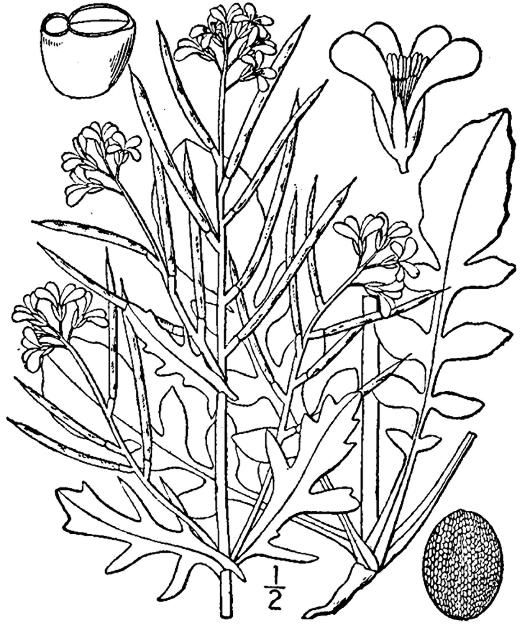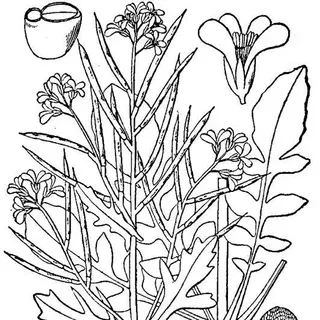Upland Cress—Barbarea verna (Mill.) Aschers.1
Cress is a general name for a range of plants eaten as a sharp tasting salad garnish or potherb. Upland cress is one of three major cresses. The other two are watercress (Nasturtium officinale) and garden cress (Lepidium sativum).
Other names for upland cress are land cress, dryland cress, cassabully, and creasy salad. Upland cress is a member of the Cruciferae family. Two very similar but slightly different species of upland cress are winter rocket (Brassica vulgaris) and Belleisle cress (B. praecox).

Credit: N. L. Britton and A. Brown
Description
Upland cress resembles watercress in form and flavor. The leaves are very small, almost square shaped, with slight notching of the leaf margins. The plant is low and spreading, with 6 to 8-inch-long leafstems.
Culture
Upland cress is seldom found in Florida gardens, although it will grow here. Like spinach, it should be grown during the coolest months of the year, for it is extremely hardy.
Unlike watercress, upland cress may be grown on most garden soils and in a manner similar to the more common vegetables. Seed should be sown in September through December. Seeds should be planted shallowly, about ½ inch deep, in moist soil. Seeds should be planted fairly thick followed by thinning to remove the weakest plants and obtain the desired stand. Since the seeds are small, it is necessary for the seedbed to be smooth, level, and free of clods, trash, and weeds. Rows should be spaced 12 inches apart and plants spaced 3–6 inches within the row.
Use
The leaves are picked when the plants become well-established (about 4-inches high). The stem and roots are left intact so that new leaves may be picked as they grow. The entire plant may be harvested at once as an alternative. Leaves may be cooked as greens or used raw in salads or as a garnish.



